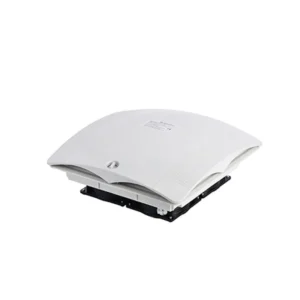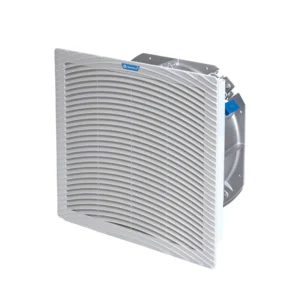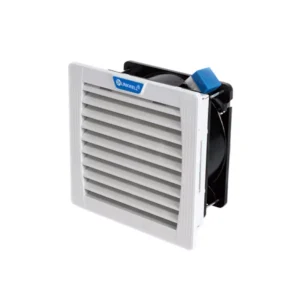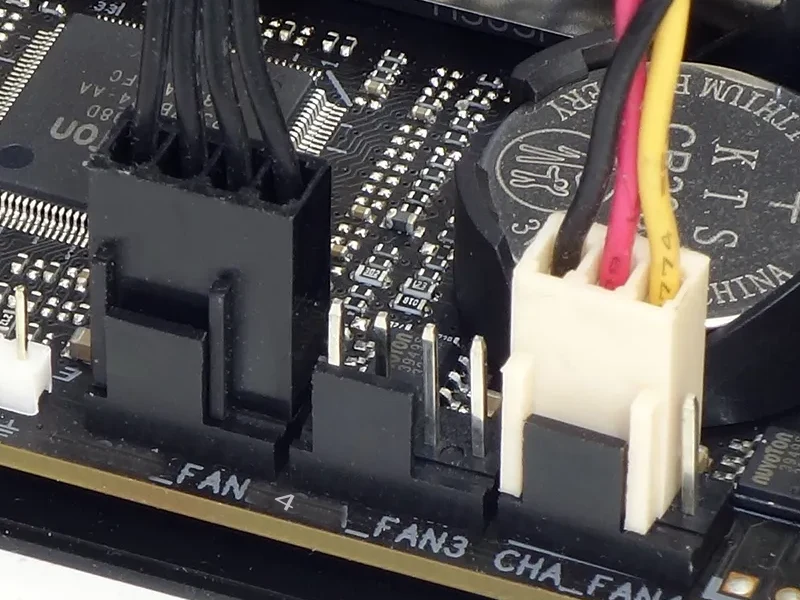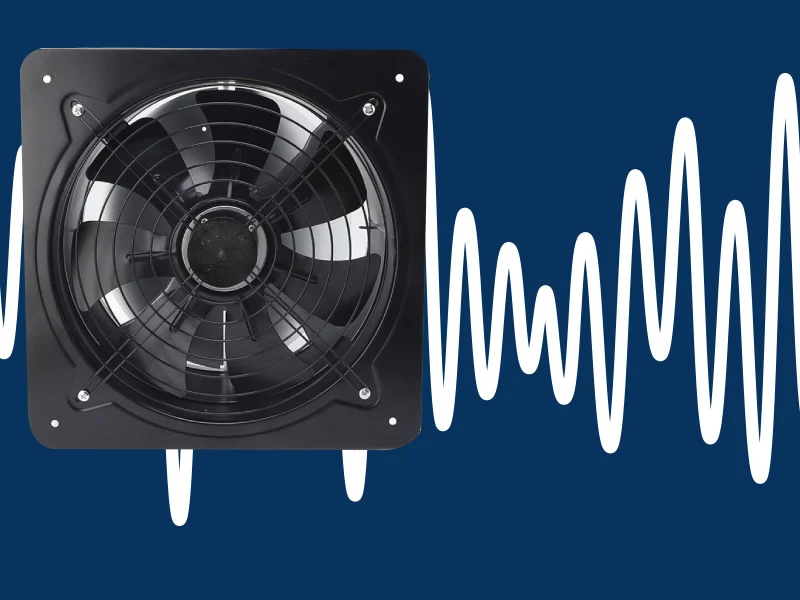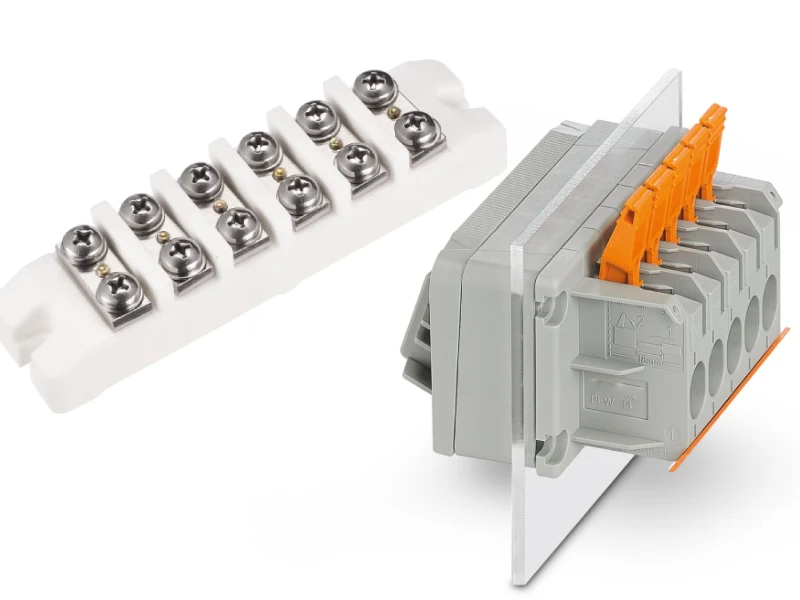If you wonder what really sets a 3 pin fan vs 4 pin fan apart, it comes down to how each controls speed and handles noise in your PC. In 2025, picking the right fan type can make a huge difference in how quiet and cool your system runs. You’ll notice that 4-pin fans use advanced PWM technology to adjust speed more precisely, staying quiet during simple tasks and ramping up only when needed. On the other hand, 3-pin fans rely on voltage changes, which can be less flexible and sometimes noisier. With Linkwell’s decades of cooling expertise and their Computer Chassis Fan, you can feel confident that you’ll match the perfect fan to your needs, whether you want silent operation or powerful airflow.
Key Takeaways
- 3-pin fans use voltage control for speed, while 4-pin fans use PWM technology for precise speed adjustments.
- Choosing a 4-pin fan can lead to quieter operation and better energy efficiency, especially during heavy tasks.
- Most motherboards in 2025 support both fan types, making installation easy and flexible.
- 4-pin fans allow for detailed fan curve setups in BIOS, giving you more control over cooling and noise levels.
- Linkwell fans offer strong airflow and low noise, making them ideal for gaming PCs and workstations.
3 Pin Fan vs 4 Pin Fan: Key Differences

Pin Layout and Wiring
When you look at a 3 pin fan vs 4 pin fan, the first thing you’ll notice is the connector. A 3-pin fan has three wires: one for power, one for ground, and one for RPM monitoring. A 4-pin fan adds an extra wire for PWM control. This extra pin makes a big difference in how your system manages fan speed.
Here’s what you need to know about wiring and compatibility:
- You can plug a 3-pin fan into a 4-pin header on your motherboard. The design allows for this, so you don’t have to worry about damaging anything.
- If you use a 3-pin fan on a 4-pin header, it will run at full speed because it can’t use the speed control features.
- Upgrading to a 4-pin fan gives you access to pwm speed control, which means your system can adjust fan speed for quieter operation.
- Linkwell’s Computer Chassis Fan comes in both 3-pin and 4-pin options, so you can pick the right fit for your build.
Recommended products
Speed Control: DC vs PWM
The way your fan changes speed depends on its pin layout. 3-pin cooling fans use dc speed control, which means the motherboard changes the voltage to make the fan spin faster or slower. 4-pin cooling fans use pwm functionality, which stands for pulse width modulation. This lets your system send tiny bursts of power to the fan, giving you more precise control.
Let’s break down the differences:
| Feature | DC Voltage Control | PWM Control |
|---|---|---|
| Fan Type | 3-pin fans | 4-pin fans |
| Control Method | Varies input DC supply | Uses PWM signal |
| Speed Variation | Limited by minimum threshold voltage | Wide range (30-100% of rated speed) |
| Voltage Supply | Directly reduces voltage to fan | Constant voltage with varying duty cycle |
| Fan Operation | Slows down with reduced voltage | Starts/stops based on PWM signal |
With 4-pin cooling fans, you get automatic speed modulation. This means your fan can ramp up when your system gets hot and slow down when things cool off. PWM technology allows for dynamic adjustments based on thermal demands, so your fan only works as hard as it needs to. You’ll notice less noise and better energy efficiency, especially if you use your PC for gaming or heavy workloads.
RPM Monitoring and Efficiency
Both 3-pin and 4-pin fans let you monitor RPM, but the way they handle speed and efficiency is different. Here’s a quick comparison:
| Fan Type | RPM Monitoring Method | Control Method | System Efficiency Implication |
|---|---|---|---|
| 3-pin | Speed sensor | Variable voltage | Runs at full speed without control unless modified |
| 4-pin | PWM signal | Pulse width modulation | Allows for efficient speed control, improving system efficiency |
PWM fans are more energy-efficient because they can run at lower speeds while still maintaining full voltage. This reduces power consumption over time. In contrast, a 3-pin fan operates at a higher minimum speed, which means it uses more power when your system doesn’t need maximum cooling.
If you want a fan that balances airflow, noise, and energy use, a 4-pin fan is the way to go. Linkwell’s Computer Chassis Fan uses advanced pwm speed control to keep your system cool and quiet, while also saving energy. This makes it a smart choice for anyone looking to future-proof their PC or industrial setup.
Tip: If you want the quietest and most efficient system, choose 4-pin cooling fans with PWM support. You’ll get better control, less noise, and lower energy bills.
Compatibility and Installation
Motherboard Support in 2025
Motherboards in 2025 make it easy for you to use both 3-pin and 4-pin fans. Most new boards come with smart fan headers that auto-detect the type of fan you plug in. This means you do not have to worry about matching the exact connector every time. Here’s a quick look at what you can expect:
| Feature | Description |
|---|---|
| Fan Compatibility | Supports both 3-pin and 4-pin fans with auto-detection |
| Maximum Fan Power | 2A (24W) for chassis/water pump fan |
| Fan Headers | CPU_FAN2/WP and CHA_FAN1~3/WP auto detect fan type |
You can install Linkwell Computer Chassis Fans in almost any modern PC case or server rack. These fans use universal mounting, so you get a quick and easy setup. You can also choose between AC or DC power, and pick the right connector for your system.
Connecting Fans: Headers and Splitters
When you want to add more fans, you have a few options. You can use fan hubs or splitters to connect multiple fans to one header. Here are some best practices:
- Use a fan hub if you need to connect more than two fans. This helps manage power and keeps things safe.
- If you use a 4-pin fan hub, make sure it gets power from the PSU, not just the motherboard.
- Y-splitters work well for two fans, but do not connect more than two to a single header.
- Fan splitters let you control several fans at once. With 4-pin fans, all connected fans run at the same speed, which is great for cooling. With 3-pin fans, you might not get perfect speed sync.
Tip: Always check your motherboard’s power limits before adding extra fans. This keeps your system safe and running smoothly.
BIOS Fan Curve Setup
Setting up your fan curves in the BIOS helps you control noise and cooling. Here’s how it works for each fan type:
| Fan Type | Connector Type | Control Method | Customization Options |
|---|---|---|---|
| 4-pin | PWM | Software (BIOS) | Easy and flexible |
| 3-pin | DC | Voltage Adjustments | Limited customization |
With 4-pin fans, you can use software or BIOS to set detailed fan curves. This lets you fine-tune speed for every temperature. For 3-pin fans, you can only adjust voltage in the BIOS, so you get less control. Linkwell Computer Chassis Fans support both types, so you can pick what fits your build best.
If you work as a wholesaler, brand, or IT technician, you’ll appreciate how Linkwell fans adapt to different systems. Their universal mounting and flexible connectors make installation simple, saving you time on every project.
Choosing 3-Pin Cooling Fans or 4-Pin Cooling Fans
Performance and Noise
You want your PC to run cool and quiet. That means you need to think about how each fan type affects performance and noise. A 3-pin fan uses voltage control. You get basic speed adjustment, but the fan often runs louder, especially at higher speeds. A 4-pin fan uses PWM signals. This lets your system adjust speed automatically based on temperature. You get quieter operation and better performance when your PC heats up.
Recent reviews show that 4-pin fans can be noisier at high speeds, but they stay much quieter at lower RPMs. If you want a silent build, you should look for fans that offer precise control. Here’s a quick table to help you compare:
| Feature | 3-Pin Fans | 4-Pin Fans (PWM) |
|---|---|---|
| Control Method | Voltage adjustment | PWM signals for precise control |
| Speed Adjustment | Limited control | Automatic adjustment based on temp |
| Noise Levels | Generally louder | Quieter operation |
| Best For | Budget builds, basic airflow | Performance-focused, quiet builds |
Tip: If you want optimal performance and less noise, choose 4-pin fans for your gaming or workstation setup.
Linkwell Computer Chassis Fan Advantages
You want a fan that delivers strong airflow and low noise. Linkwell Computer Chassis Fans stand out because they combine easy installation with compatibility for bulk orders or custom projects. These fans work great in high-performance setups like gaming PCs and workstations. You get stable operation and a long service life. Energy-saving features help lower your electricity bills.
- Strong airflow for better cooling performance
- Low noise levels for quiet operation in offices or shared spaces
- Easy installation saves you time
- Reliable and efficient for demanding environments
- Supports bulk orders and custom designs
Linkwell fans use advanced PWM technology. This gives you precise speed control and helps manage noise. You get flexibility in your build, whether you want a silent PC or a high-performance system.
| Feature | Description |
|---|---|
| PWM Technology | Enables precise speed control for optimal cooling and noise management. |
| Energy Efficiency | Adjusts speed based on demand, reducing power consumption and costs. |
| Noise Reduction | Operates at lower speeds when full airflow isn’t needed, minimizing noise. |
| Performance Control | Provides flexibility in design, allowing for quieter systems and smaller fans. |
Future-Proofing Your Build
You want your PC to last. In 2025, cooling fans need to keep up with new motherboard and case standards. The 4-pin PWM connector gives you more precise control over fan speed. This makes your system ready for future upgrades and advanced cooling technologies. Trends show that builders want better performance, efficient airflow, and noise reduction. Larger fans and customizable features like RGB lighting are becoming more popular.
- Focus on performance and aesthetics in cooling fan design
- Efficient airflow and noise reduction matter more than ever
- Customizable features let you personalize your build
- Larger fans help manage heat from high-performance components
If you plan to upgrade your system or build a high-end PC, 4-pin fans are the smart choice. They offer better compatibility and performance for the future.
You now know the key differences between 3-pin and 4-pin cooling fans. Here’s a quick table to help you compare:
| Feature | 3-Pin Fan | 4-Pin Fan |
|---|---|---|
| Wires | 3 | 4 |
| Function | Basic speed control | Precise PWM control |
| Best Use | Desktops, basic builds | Gaming, servers, silent PCs |
If you want simple speed control, a 3-pin fan works well for desktops. For gaming or silent builds, 4-pin fans give you automatic control and quieter performance. Linkwell’s Computer Chassis Fan supports both, so you can match your system’s control needs. Always check compatibility and plan for future upgrades. Smart control choices keep your PC cool and efficient.
FAQ
What is the main difference between 3-pin and 4-pin fans for cooling?
You will notice the main difference in how each fan handles cooling. A 3-pin fan uses voltage to control cooling speed. A 4-pin fan uses PWM for more precise cooling. This gives you better control over your system’s cooling and noise.
Can I use a 3-pin fan on a 4-pin header for cooling?
Yes, you can use a 3-pin fan on a 4-pin header for cooling. The fan will still provide cooling, but you lose advanced speed control. Your system will rely on basic voltage adjustments for cooling instead of PWM.
Why should I choose a 4-pin fan for cooling in 2025?
A 4-pin fan gives you better cooling control. You get quieter cooling and more efficient cooling performance. This matters if you want your system to stay cool during heavy tasks. You also get future-proof cooling for new hardware.
How do I set up fan curves for better cooling?
You can set up fan curves in your BIOS for smarter cooling. With a 4-pin fan, you get more options for cooling adjustments. This lets you balance cooling and noise. You can keep your system cool without extra noise.
Are Linkwell Computer Chassis Fans good for bulk cooling needs?
Yes, Linkwell Computer Chassis Fans work well for bulk cooling. You get reliable cooling for offices, data centers, or industrial setups. These fans offer strong airflow and quiet cooling. You can trust them for long-lasting cooling in demanding environments.

